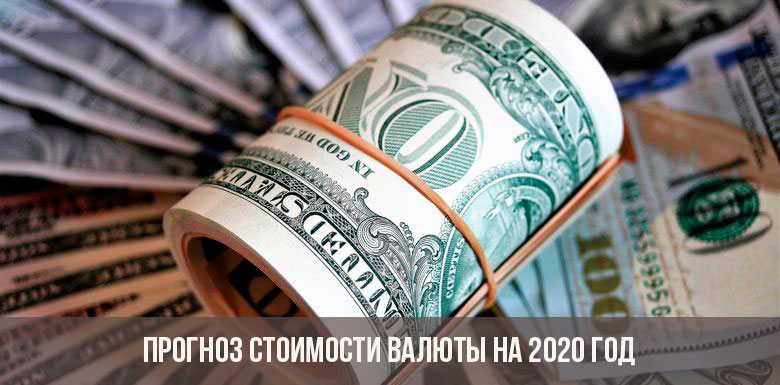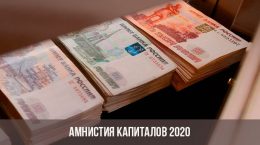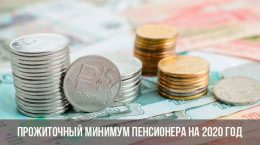Content [Hide]
Owners of foreign currency accounts, businessmen and ordinary citizens, due to the growth of financial literacy, are increasingly interested in how much the currency will cost in 2020. Of course, not a single expert can give a 100% forecast of the value of the currency, however, you can catch the main trends in this area today.
Estimated cost forecast
For convenience, the estimated currency prices for 2020 are broken down on a monthly basis and are presented in tables 1-4.
Dollar
If we take the USD / RUB pair specifically, then we can distinguish the following main factors affecting exchange rate fluctuations in 2020, namely:
- oil prices;
- the policy of the Central Bank of Russia, which is conducted taking into account the projected inflation rate;
- the presence of surplus (or, conversely, deficit) state. the budget of the Russian Federation, the level of GDP, the balance of payments of the country;
- positions of the largest Russian players in the foreign exchange market;
- political factor (sanctions and restrictions).
According to the Izvestia portal, experts from the Ministry of Economic Development forecast inflation in 2020 at 3.4% and the average rate of the US national currency near the mark of 63.8 rubles. According to the forecast of Sberbank analysts, the average annual ruble exchange rate against the US currency in 2019 will be in the range of 68.5 rubles per dollar, and by 2020 this figure will be about 4% (instead of the initially projected 5%).
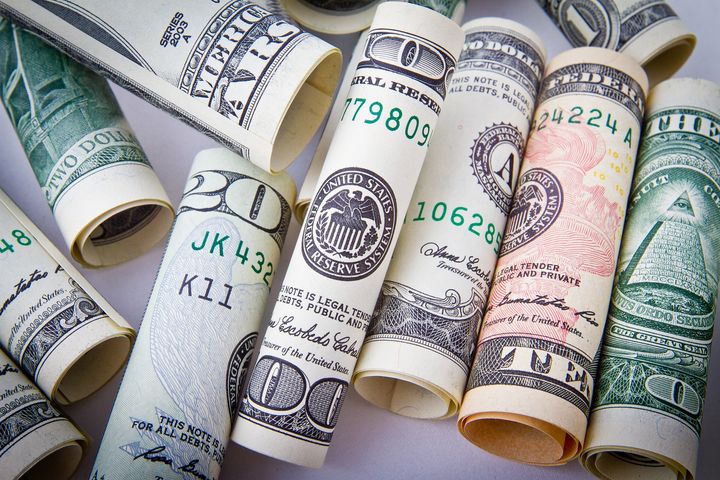
According to experts from the Development Center of the Higher School of Economics, in the period 2019-2021 the ruble to dollar exchange rate will weaken: taking into account the real inflation rate, this indicator will be in the price range established for the III quarter of 2018 (63-69 rubles, on average 65.3 rubles in 2020 and 66.1 rubles in 2021).
Analysts of IC “Income” give even less optimistic forecasts. According to experts, if Washington adopts a new package of sanctions (which will inevitably lead to an outflow of capital from the Russian Federation), Russia's domestic currency will weaken: the exchange rate by the beginning of 2020 could reach 73.5 rubles per 1 dollar. But, it is worth noting, this is one of the gloomiest forecasts: it is unlikely that the expectations of experts will be met, since most experts from other expert and rating agencies predict the exchange rate at 65-70 rubles. for the dollar.
Table 1 - the Dynamics of the dollar in 2020
| Month | Opening price | Min and max values | Closing price | Monthly dynamics,% | Total, % | |
|---|---|---|---|---|---|---|
| January | 64.31 | 62.71-64.63 | 63.67 | -1.0 | -3.4 | |
| February | 63.67 | 63.67-66.56 | 65.57 | 3.0 | -0.5 | |
| March | 65.58 | 65.50-67.50 | 66.49 | 1.4 | 0.9 | |
| April | 66.50 | 65.64-67.64 | 66.64 | 0.2 | 1.1 | |
| May | 66.64 | 64.00-66.64 | 64.96 | -2.5 | -1.4 | |
| June | 64.97 | 63.10-65.02 | 64.06 | -1.4 | -2.8 | |
| July | 64.06 | 63.27-65.19 | 64.23 | 0.3 | -2.5 | |
| August | 64.23 | 64.15-66.11 | 65.13 | 1.4 | -1.2 | |
| September | 65.13 | 63.62-65.56 | 64.59 | -0.8 | -2.0 | |
| October | 64.59 | 61.71-64.59 | 62.65 | -3.0 | -4.9 | |
| November | 62.65 | 62.65-64.56 | 63.61 | 1.5 | -3.5 | |
| December | 63.61 | 63.61-66.50 | 65.52 | 3.0 | -0.6 |
Euro
If in the case of the dollar experts have formed a more or less unanimous opinion, then even an approximate forecast of the value of the euro for 2020 is quite difficult. The fact is that the rate of the European currency against the ruble depends not only on the situation on the domestic market of Russia, but also, to a greater extent, on the rate of the euro against the dollar.
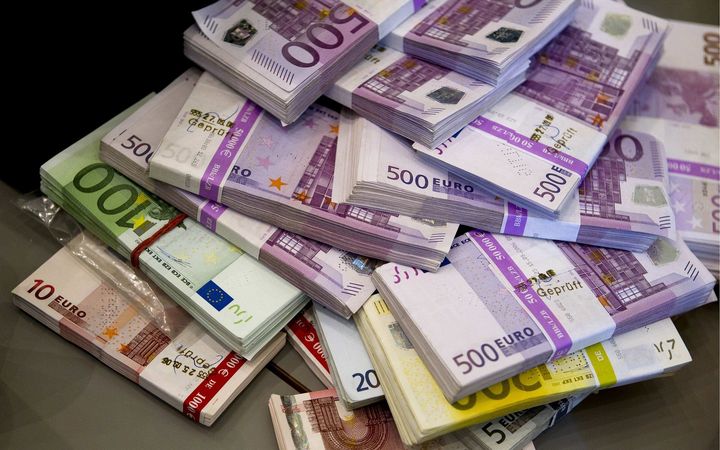
The final price of the currency on the exchange will be related to the economic situation in the EU countries, in particular, in Germany and France, which account for an average of 49-52% and 20-25% of the total GDP of the European Union. It is no secret that the situation in the Eurozone is unstable today. According to the famous financier George Soros, the global crisis is inevitable, and its main “blow” will be in the Eurozone. There are several reasons for the disintegration processes that can lead to a weakening of the European currency:
- the economic situation of the region (tightening budget savings);
- disruption of the Transatlantic trade and investment partnership with the United States;
- brexit, i.e. UK's planned exit from the EU (was delayed until May 22, 2019);
- Washington's withdrawal from the nuclear agreement;
- the migration crisis, which led to mass protests among the local population, populist sentiments and the emergence of the so-called “Eurosceptics”. To get rid of the influx of refugees will have to sponsor African countries: the cost of investment, according to Soros, will amount to 30 billion euros per year.
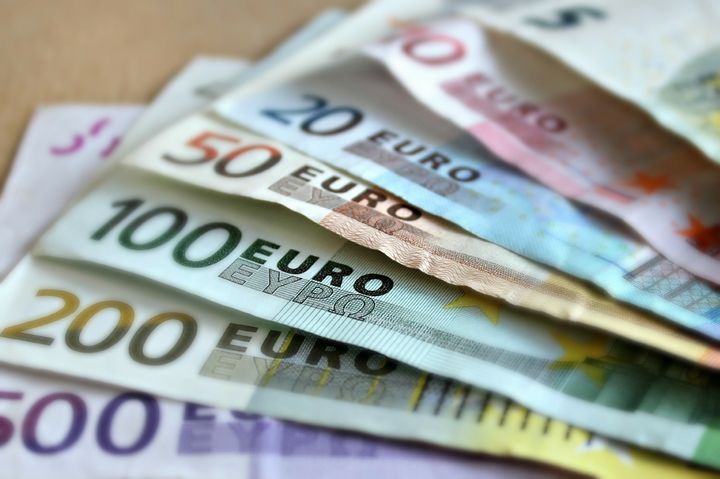
Given the inflation expectations of the ECB, according to which the real inflation rate in 2020 will remain at 1.7%, the following forecast of the EU currency for 2020 can be given.
Table 2 - the Dynamics of the euro for 2020
| Month | Opening price | Min and max values | Closing price | Monthly dynamics,% | Total, % | |
|---|---|---|---|---|---|---|
| January | 70.60 | 67.45-70.60 | 68.48 | -3.0 | -8.6 | |
| February | 68.48 | 68.48-71.59 | 70.53 | 3.0 | -5.9 | |
| March | 70.53 | 70.53-73.35 | 72.27 | 2.5 | -3.6 | |
| April | 72.27 | 70.07-72.27 | 71.16 | -1.5 | -5.1 | |
| May | 71.15 | 70.69-72.85 | 71.77 | 0.9 | -4.2 | |
| June | 71.77 | 70.30-72.43 | 71.37 | -0.6 | -4.8 | |
| July | 71.37 | 71.37-74.22 | 73.11 | 2.5 | -2.4 | |
| August | 73.12 | 72.00-74.20 | 73.09 | 0.0 | -2.5 | |
| September | 73.10 | 70.78-73.10 | 71.86 | -1.7 | -4.1 | |
| October | 71.86 | 69.08-71.86 | 70.13 | -2.4 | -6.4 | |
| November | 70.13 | 70.13-73.31 | 72.23 | 3.0 | -3.6 | |
| December | 72.23 | 72.23-75.52 | 74.40 | 3.0 | -0.7 |
GBP
According to experts from the Bank of England, based on their recent report, the British pound may decline by 25% in 2019-2020. due to brexitis. The fact is that British analysts have two possible scenarios for the development of the situation in the country:
- the possibility of concluding new agreements with former partners from the EU;
- the loss of all existing trade contracts with the countries of the Eurozone, the inability to ensure cross-border transition of the required quantity of goods.
In the second case, UK GDP will decline by 8% by 2023, and the exchange rate (according to the most pessimistic scenario) may decline by 25% in 2020-2021. Already today we can judge that the British economy is in a "limbo" state. For the period 2016-2019 the country's currency lost about 9% of its value, housing prices fell by 30%, the unemployment rate rose to 7.5% (doubled in fact since 2016), inflation at the moment is 6.5%.
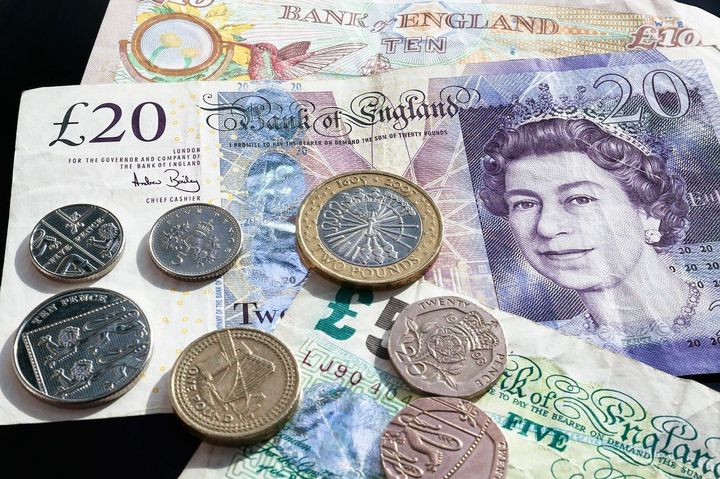
The leaders of the EU countries as early as November 25, 2018, agreed on an Brexit agreement with the UK based on the outcome of the referendum. Everything will depend on the further economic situation in the EU and the readiness of the former British allies to comply with the terms of the political declaration (it remains only to wait for a final decision on this issue from the European Parliament). Based on the foregoing, we can imagine the next pound sterling rate for 2020.
Table 3 - the Dynamics of the pound in 2020
| Month | Opening price | Min and max values | Closing price | Monthly dynamics,% | Total, % |
|---|---|---|---|---|---|
| January | 85.5 | 81.7-85.5 | 82.9 | -3.0 | -5.1 |
| February | 82.9 | 82.9-86.7 | 85.4 | 3.0 | -2.3 |
| March | 85.4 | 85.4-89.2 | 88.0 | 3.0 | 0.7 |
| April | 88.0 | 84.2-88.0 | 85.4 | -2.8 | -2.2 |
| May | 85.5 | 85.5-89.0 | 87.6 | 2.6 | 0.3 |
| June | 87.7 | 85.0-87.7 | 86.3 | -1.6 | -1.3 |
| July | 86.3 | 86.3-89.4 | 88.0 | 2.1 | 0.8 |
| August | 88.1 | 87.3-89.9 | 88.6 | 0.6 | 1.4 |
| September | 88.6 | 88.6-92.5 | 91.0 | 2.7 | 4.1 |
| October | 91.0 | 87.0-91.0 | 88.3 | -3.0 | 1.0 |
| November | 88.3 | 88.3-92.3 | 90.9 | 2.9 | 4.0 |
| December | 90.9 | 90.9-95.0 | 93.6 | 3.0 | 7.1 |
Yuan
The Chinese yuan cannot be called a freely convertible currency, since its exchange rate varies depending on the floating range set by the Central Bank of China. According to experts from the Dutch financial conglomerate ING, the yuan will decline in 2020 in the event of a general appreciation of the US dollar. Donald Trump, in turn, does not believe that the Chinese national currency will become cheaper, regardless of the outcome of the current trade negotiations between China and the United States, within the framework of which it is planned to abandon the competitive devaluation of two national currencies.
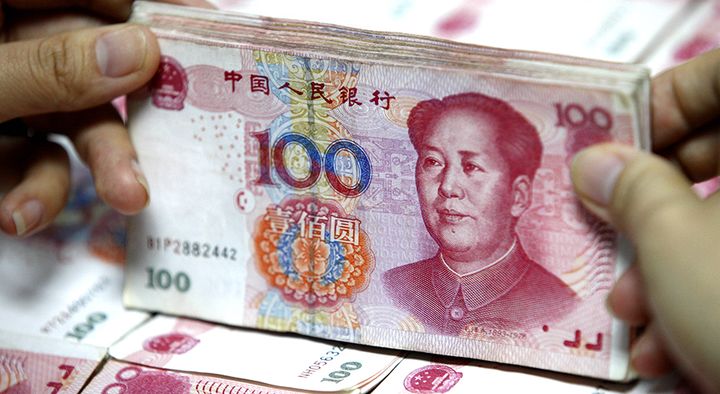
In general, experts note that the yuan exchange rate will follow the dollar index: the country's economy is not yet ready to remove restrictions on capital flows, since an increase in cross-border cash flow can lead to increased renminbi volatility in 2020-2023. Therefore, in the coming years, the yuan liberalization process will go smoothly, without significant currency jumps. Based on this circumstance, we can make an approximate forecast of the renminbi rate for 2020.
Table 4 - the Dynamics of the renminbi for 2020
| Month | Opening price | Min and max values | Closing price | Monthly dynamics,% | Total, % |
|---|---|---|---|---|---|
| January | 11567 | 8.97-9.31 | 43778 | -2.1 | -7.5 |
| February | 43778 | 9.11-9.52 | 14124 | 3.0 | -4.8 |
| March | 14124 | 9.38-9.73 | 21429 | 2.2 | -2.6 |
| April | 21794 | 9.40-9.69 | 20333 | -0.5 | -3.1 |
| May | 19968 | 9.49-9.77 | 23255 | 0.9 | -2.2 |
| June | 23255 | 9.51-9.79 | 22525 | 0.2 | -2.0 |
| July | 23986 | 9.56-9.86 | 26177 | 0.6 | -1.4 |
| August | 26177 | 9.71-10.01 | 32387 | 1.8 | 0.3 |
| September | 32387 | 9.55-9.88 | 25812 | -1.8 | -1.5 |
| October | 25812 | 9.45-9.73 | 21794 | -1.1 | -2.6 |
| November | 21794 | 9.59-9.97 | 30195 | 2.4 | -0.3 |
| December | 30195 | 9.82-10.26 | 43779 | 3.0 | 2.6 |
What the exchange rate depends on
Significant impact on the Russian economy as a whole and on the ruble to the dollar in particular has a decline in oil prices. If at the beginning of October 2018 the price of 1 barrel of Urals oil was at the level of 86 USD, then on March 27, 2019 the closing price was only 68.15 USD per barrel. At the same time, the dollar against the ruble from the beginning of October 2018 to the end of March 2019 fell by 1.34 rubles.Given such dynamics and the cyclical factor of economic processes, we can conclude that the cost of a barrel of Russian Urals oil will be in the price range from 60 to 75 rubles.
Why does oil influence the Russian economy so much? Everything is explainable:
- the share of oil and its refined products is about 50-60% in the country's total exports;
- from the oil and gas industry, from 45 to 50% of revenues to the national treasury is generated (due to indirect and direct taxes and dividends);
- the oil and gas sector is on a par with metallurgy and energy in terms of labor productivity. Financial planning in Russia is carried out in conjunction with the notorious cost of a “barrel of honey” - an oil barrel.
Therefore, one can observe a clear correlation between the cost of a barrel of oil and the ruble exchange rate in relation to various currencies. Accordingly, the more expensive Russian oil, the higher the competitiveness of Russia in the world arena.
Read also:

